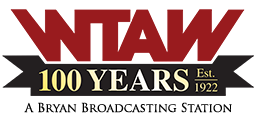
While dirt continues to be removed from the lake at the city of Bryan’s Midtown Park, the city council will continue discussing another feature at a future meeting.
During the council’s May 11th meeting, an update on the city’s future capital improvements plan proposed building a $5 million dollar boardwalk and pier during the 2024 fiscal year. City manager Kean Register told the council he heard interest from “a lot of citizens” about the feature. Register suggested moving up the construction timetable since the lake will be without water for at least another year.
Public Works director Jayson Barfknecht told WTAW News the amount of dirt that has been removed from the lake would reach 80 feet in height on the playing surface at Kyle Field. Responding to questions from a WTAW listener, Dr. Barfknecht says about 15 percent of the soil has stayed at the park. About one-fourth was trucked to a disposal pit owned by the contractor. And the remaining 57 percent went to Twin Oaks Landfill after samples detected an elevated arsenic level. The expanded lake, which will not be lined, was previously cleared by the state for fishing and recreational activities before the excavation started.
270 soil samples were taken, and excavation was done at one foot increments; with the contractor using GPS technology on his dozers and excavators.
Click below for comments from the May 11, 2021 Bryan city council meeting. Speakers include Kean Register, Jayson Barfknecht, and council members.
Listen to “Activity continues at the city of Bryan's Midtown Park lake” on Spreaker.
Questions to Bryan public works director Jayson Barfknecht about the deepening and widening of Midtown Park lake and his responses:
Since it appears the city of Bryan is done with the excavation of the lake at College and West Villa Maria, do we know the extent of the core sampling which was used to detect arsenic in the sediments and there findings?
Excavation is not complete.
Prior to excavations beginning at the lake, core samples were taken across the lake in a grid formation to determine the levels of arsenic at various depths for a total of 270 sediment samples analyzed for arsenic. We were pleasantly surprised to learn from test samples that arsenic levels were low enough to allow disposal at our local landfill. The design team used these results to prepare the excavation plans and give the contractor specific direction.
Excavation was to occur at 1 foot increments based on 2 factors:
1. If the soil/sediments were at safe levels (classified as “clean dirt”) the material will be used on site or hauled to a designated offsite fill area.
2. If the soil/sediments showed elevated arsenic levels, the material would be hauled to the Twin Oaks Landfill.
The contractor utilizes GPS technology embedded on his excavators and dozers to insure compliance with that grading plan.
If so how much of the material was removed and did they dig down past the levels of contamination?
To date 143,132 cubic yards of sediment/soil has been removed from the lake, with 40,140 cubic yards of material applied to designated private property disposal, 21,598 cubic yards of material to be reused on site, and 81,394 cubic yards of material disposed of at the Twin Oaks Landfill.
Arsenic exists naturally in soils and sediment and the plan was never to eliminate all traces of arsenic but rather the plan was to deepen the lake for greater water capacity, enhanced aesthetics, and expanded recreational use. The lake sediment and nearby soils were previously cleared by TCEQ for fishing and recreational activities prior to beginning this current project. The excavation of the 143,132 cubic yards of material further enhances the lake for recreational activity.
If not will the lake have to be lined?
The lake will not be lined.
Where are the locations of the “private property disposal”?
Contractor’s own disposal pit off of FM 60. The bid allowed for disposal at 3 possible sites. The Contractor’s site and two City owned properties. These sites were tested for background arsenic levels prior to bidding. We asked other possible disposal sites around the county if we could test for background and be a potential site for disposal prior to bidding.
Did the city paid those private property owners and/or if those private property owners paid the city for that dirt?
The contract had bid items for three excavations. The price for the contractor to excavate and haul (landfill, offsite, stockpile on site) had a separate bid price and was competitively bid.
What is the best way to illustrate the volume of material diverted for reuse on site, to Twin Oaks, and to private property locations?
Using the playing surface of Kyle Field (End zone to End zone (100 yards long and side line to side line):
Private property – 22.5 feet of material on the playing surface
Reused on site – 12 feet of material on the playing surface
Landfill – 45.5 feet of material on the playing surface
